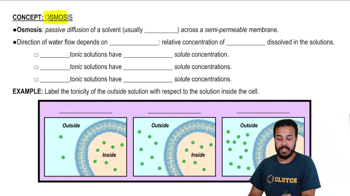Multiple Choice
What allows sodium and potassium ions to diffuse down their electrochemical gradient across the cell membrane?
 Verified step by step guidance
Verified step by step guidance Verified video answer for a similar problem:
Verified video answer for a similar problem:



 4:51m
4:51mMaster Concentration Gradients and Diffusion with a bite sized video explanation from Bruce Bryan
Start learning